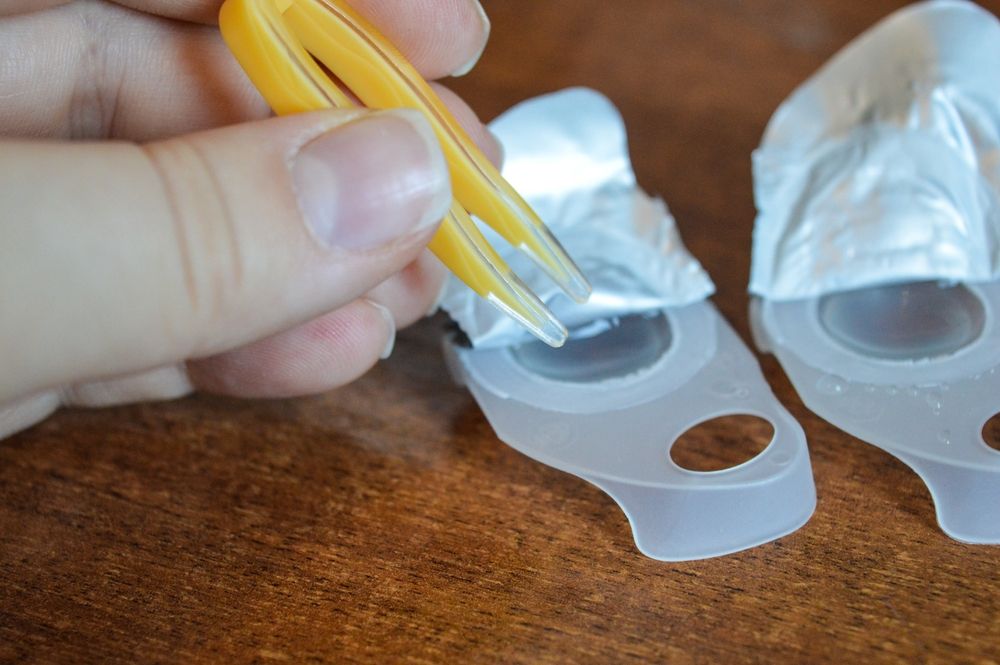Wearing contact lenses can be life-changing for many, offering freedom from glasses and a wider field of vision. However, for those dealing with dry eye syndrome, contacts can sometimes add to the discomfort. At Colorado Eye Clinic, Dr. Abed Namavari frequently sees patients in Greenwood Village and the greater Denver area who struggle with dryness, irritation, or redness while wearing contacts. In many cases, improper contact lens hygiene is a contributing factor.
Dry eye and contact lenses share a complicated relationship. Contact lenses rest directly on the tear film, the very layer that is compromised in dry eye patients. If that tear film is unstable or inadequate, the lens can become dry, uncomfortable, and even cause microscopic damage to the eye’s surface. Proper lens hygiene not only prevents infections but also supports the delicate balance of the ocular surface, which is critical for comfort and eye health.
How Poor Hygiene Worsens Dry Eye Symptoms
Many contact lens wearers are unaware that small lapses in hygiene can lead to significant eye problems. Failing to clean lenses properly, skipping the rubbing step, or overwearing contacts past their replacement schedule can all lead to an accumulation of debris and microorganisms on the lens. This buildup triggers inflammation, increases dryness, and in some cases, causes infections like keratitis or corneal ulcers.
In patients with dry eye, the impact is often magnified. Because the tear film is already unstable, any additional irritation can escalate quickly. Debris trapped on or beneath the lens may worsen friction on the eye’s surface, while bacterial biofilms can lead to chronic inflammation that’s difficult to resolve. Dr. Namavari stresses that contact lens wearers who experience symptoms such as gritty sensation, redness, or fluctuating vision should seek an eye doctor’s evaluation sooner rather than later. These symptoms can be signs of underlying dryness or poor hygiene practices.
Key Hygiene Tips for Safe Contact Lens Wear
Maintaining healthy lens habits is essential for everyone—but especially for those with dry eye concerns. Practicing proper hygiene minimizes irritation, supports tear film stability, and reduces the risk of infections or long-term complications. Dr. Namavari offers the following guidelines for contact lens care:
- Always wash and dry your hands before handling lenses.
- Clean lenses daily using fresh solution—never reuse yesterday’s liquid.
- Use a proper multipurpose or hydrogen peroxide-based disinfecting solution as recommended.
- Rub and rinse lenses even if your solution is labeled “no-rub.”
- Replace lens cases every three months or sooner if contaminated.
- Avoid water exposure—including swimming and showering with lenses in.
- Never sleep in lenses unless specifically approved by your eye doctor.
- Stick to the replacement schedule, whether daily, bi-weekly, or monthly.
These steps are especially important in a dry climate like Denver’s, where environmental factors already contribute to faster tear evaporation. Ensuring lenses remain free of irritants and moisture-draining deposits is key to preserving comfort and clarity throughout the day.
Choosing the Right Lenses for Dry Eye
Not all lenses are created equal, and some are far more compatible with dry eyes than others. During a comprehensive exam at Colorado Eye Clinic, Dr. Namavari evaluates both the surface of the eye and tear film quality to determine the best lens material and replacement schedule for each patient. For individuals with moderate to severe dry eye, switching to daily disposable lenses often results in dramatic improvement.
Daily disposables eliminate the need for overnight storage, reducing the risk of bacterial buildup and solution-related sensitivities. They are also made from newer, high-water-content materials or silicone hydrogel, which offer better oxygen permeability and moisture retention. In some cases, scleral lenses—large, gas-permeable lenses that vault over the cornea—may be recommended for patients with more advanced dry eye disease. These lenses create a fluid reservoir over the eye, providing constant hydration throughout the day.
For many patients in Greenwood Village and surrounding Denver communities, lens success comes down to finding the right fit and material, paired with personalized care from an experienced eye doctor.
When to See an Eye Doctor for Contact Lens Discomfort
Occasional lens discomfort is not uncommon, but persistent symptoms should never be ignored. Patients who experience redness, burning, blurred vision, or excessive dryness while wearing lenses should schedule an exam to rule out complications. Dr. Namavari explains that many people attempt to self-manage these symptoms with artificial tears or by switching brands, but that rarely solves the underlying issue.
An eye exam can reveal whether discomfort stems from lens fit, hygiene lapses, allergic responses to solution preservatives, or more complex issues like meibomian gland dysfunction. In-office testing and imaging allow for precise diagnoses and tailored treatment plans. In some cases, temporary discontinuation of lenses and a period of dry eye therapy are recommended to restore ocular surface health before reintroducing contact wear.
Delaying care can increase the risk of infections, especially in patients who habitually overuse lenses or fail to follow hygiene protocols. At Colorado Eye Clinic, patients receive education along with treatment—helping them understand what to look for and how to maintain eye health for the long term.
Supporting Eye Comfort Beyond Hygiene
While proper lens care is essential, additional steps can support dry eye management and overall comfort. Simple lifestyle habits—such as using a humidifier at home, avoiding direct air flow to the eyes, and taking regular screen breaks—can help preserve tear stability throughout the day. Nutritional support, including omega-3 supplements, has also been shown to improve meibomian gland function and reduce inflammation.
Dr. Namavari also offers clinical treatments for dry eye that complement contact lens use. These may include prescription anti-inflammatory drops, thermal eyelid therapy, punctal plugs, or LipiFlow treatments, depending on the severity and cause of dryness. Integrating medical treatment with good lens hygiene creates a comprehensive strategy for patients who rely on contact lenses but don’t want to sacrifice comfort.
Patients in Denver’s dry climate, especially those who spend extended time on screens or in air-conditioned environments, are especially vulnerable. That’s why consistent care from an eye doctor familiar with both contact lenses and dry eye is crucial to long-term success.
A Personalized Approach to Eye Health
Every contact lens wearer has different needs, and managing dry eye requires a personalized plan. At Colorado Eye Clinic in Greenwood Village, Dr. Namavari combines advanced diagnostics with practical guidance to help patients make informed choices. Whether it’s adjusting your lens type, improving your hygiene routine, or treating underlying inflammation, expert care makes all the difference.
If you’re struggling with lens discomfort or dry eye symptoms, you don’t have to choose between vision and comfort. Schedule a consultation with Dr. Namavari to learn how you can wear contacts safely, protect your eyes, and enjoy clearer, healthier vision.
Resources
Stapleton, F., et al. (2017). TFOS DEWS II Epidemiology Report. The Ocular Surface
Jones, L., et al. (2016). The Impact of Contact Lens Material on Comfort. Eye & Contact Lens
Willcox, M. D. P. (2013). Microbial Adhesion to Silicone Hydrogel Lenses: Effects of Lens Wear. Eye & Contact Lens

